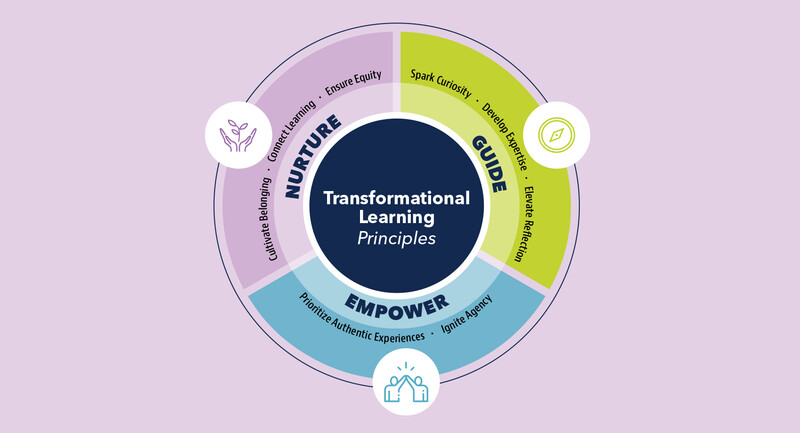Every school community has talented teachers who have either volunteered or been selected by administrators for leadership roles. Because implementing technology poses especially complex challenges, tech-savvy teachers are often plucked from the classroom and asked to support their colleagues as technology coaches.
I both understand and lament this move. Rationally, I know that we need these teachers to lead the charge and help their peers take risks and experiment. At the same time, I hate to see an incredible teacher taken out of the classroom entirely. I can't help but think about all the students who will never directly benefit from that teacher's passion and expertise.
I'd love to see schools take a more nuanced approach and find ways to allow teachers to teach part time and coach part time. As a teacher and a coach myself, I know that my work in the classroom makes me a better coach and my coaching makes me a more thoughtful teacher. When I'm coaching teachers who are shifting from a traditional teaching model to a blended learning model, I can draw on my own experiences and failures. It makes me more relatable and makes the coaching process less scary. And when I'm in my own classroom, I'm often inspired to apply ideas that have blossomed from my coaching sessions with other creative teachers. An additional benefit is that coaches who are also teachers can invite other teachers into their rooms to demonstrate specific techniques with actual students.
Redefining Professional Development
As schools attempt to better integrate technology into the classroom, it's imperative that they also rethink their approach to training teachers and leveraging teacher talent. Too many schools still rely on a handful of professional development days each year to provide their teachers with training—a classic model that's not particularly effective. To make meaningful changes in instruction, teachers need repeated, supported practice with new teaching techniques and technology tools.
How do we move from trainings to transformation? The key is to make professional learning as much a part of the school's infrastructure as the WiFi network is. If a school district brings in an expert to train the staff on a topic or teaching strategy, that training should be considered the spark—the beginning of an ongoing conversation about how to create positive change in a school.
Begin with Coaching
Coaching is an effective way to continue the learning as teachers attempt to apply new information and new teaching techniques gleaned from an expert training session. It provides an ongoing support system, which is crucial to prevent teachers from abandoning new strategies when they hit a bump in the road during implementation.
Such one-on-one work is invaluable. Coaches and teachers can plan lessons together and co-teach as the teacher builds his or her confidence in using technology or employing blended learning models. Coaches can also provide real-time feedback during lessons. Teachers who are comfortable with the coach "pausing" a lesson can learn how to adjust elements of the lesson in real time to improve learning outcomes for students.
For example, during one coaching session, I was in a 5th grade classroom with a teacher who was using the Station Rotation model to teach math. In one group, students were working collaboratively to solve a real-world math challenge taken from YummyMath.com. There were several ways to solve the problem, so students were asked to share their process and solution on a Padlet wall. After the last rotation, I paused the lesson to highlight the value of giving students time to review one another's solutions on Padlet. We asked each group to post a brief critique of another group's solution, explaining what was interesting about the approach or identifying a problem in the process and how it could be corrected.
After the class, the teacher and I discussed the importance of using technology to encourage the students to give one another constructive and respectful feedback. Allowing students to evaluate one another's work added value to the use of the Padlet wall and increased the teacher's motivation to use it in future lessons. It's my job as the coach to highlight opportunities where technology has power to enhance or improve the learning.
Supplement Coaching with Personal Learning Communities
Once a coaching culture is established, schools can boost the benefits by grouping teachers into professional learning communities (PLCs) that use common planning periods to provide one another with long-term support, nonevaluative feedback, and inspiration. Typically, a coach might meet with a PLC to share a strategy or technology tool, and then the PLC can work together to figure out what the strategy or tool might look like in their classrooms. Often, teachers in a PLC are grouped by grade level or subject area, so they can work together to design specific lessons that incorporate that strategy or tool and provide one another with nonevaluative feedback on both the design and execution of those lessons.
Schools embarking on 1:1 initiatives or shifting to a blended learning model must think beyond the cost of the hardware and consider the cost of building a professional learning network. Creating a coaching culture and professional learning infrastructure can provide essential support as teachers design, implement, and reflect on their lessons. This support—or lack thereof—can make or break a technology push or blended learning initiative.
A Good Investment
Ideally, I'd love to see schools use a coaching model paired with professional learning communities to support teachers in implementing technology throughout the school year. This approach to professional learning capitalizes on teacher talents and creates a safety net of support as teachers experiment with new technology and new teaching strategies. Instead of plucking talented technology-savvy teachers out of the classroom, those teachers would be given time in their daily schedules to work as peer coaches supporting their colleagues.
Although the professional learning infrastructure I'm suggesting could be expensive, just consider how much money is wasted in technology initiatives that fail because teachers don't have the necessary support. Leaders must consider the whole picture when it comes to technology and blended learning. They shouldn't focus myopically on devices, learning management systems, wireless networks, or the myriad of other considerations associated with getting 21st century tools into our schools. They must also focus on building a professional learning infrastructure to support innovation.








